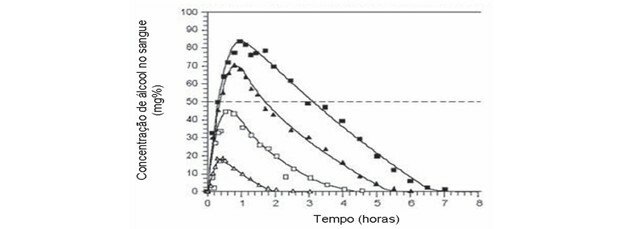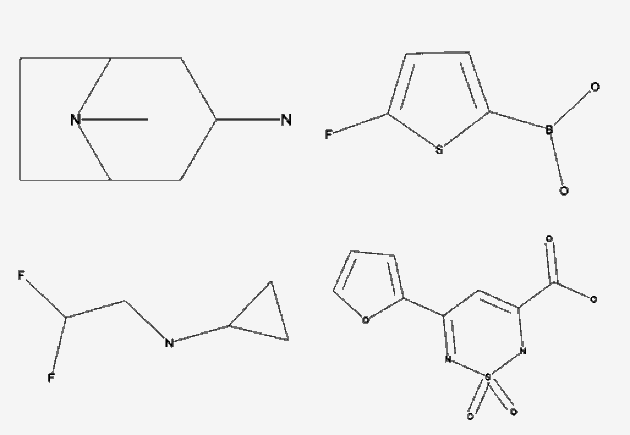Chemistry, along with Biology and Physics, is part of the Natural Sciences and its Technologies area.
There are a total of 45 questions, divided between the three subjects, which are applied on the second day of the test along with Mathematics and its Technologies.
The branches of Chemistry that are most explored in Enem are: General Chemistry, Physical Chemistry, Organic Chemistry and Environmental Chemistry.
The statements of the questions are contextualized as a way to link the areas of knowledge with everyday matters.
Chemistry subjects that fall the most in Enem
To do well on the test, you need to carefully read the questions, interpret the data and relate them to the concepts you studied.
The test's Chemistry content covers the main compounds, their properties, the chemical functions that characterize them and the reactions they can do.

Calculations are required to quantify reactions and the examples used are everyday matters; be it the production process of a relevant chemical compound or even its application in other areas, such as fossil dating.
Below, we describe the most demanding subjects and what to study about each one of them.
General chemistry
General Chemistry presents the evolution of studies in the field of Chemistry, the qualitative relationships and quantitative reactions and the introduction of concepts and terms that are the basis for understanding the others areas.
Basically, this branch covers the principles of Chemistry to understand the composition, properties and reactivity of matter.

THE General Chemistry at Enem explore more:
| Theme | Main topics |
|---|---|
| Periodic table | Chemical elements and their organization, classification of elements and properties of matter. |
| Periodic properties | |
| Mixtures | Types of mixtures, main separation methods and fractions obtained. |
| separation techniques | |
| Stoichiometry | Chemical calculations of yield and purity. |
| Stoichiometric calculations | |
| Chemical bonds | How atoms link to form different substances and interaction between molecules. |
| intermolecular forces | |
| Molecular Geometry | Characteristics of the main compounds. |
| Solubility |
General Chemistry Question
(Enem/2018) In Greek mythology, Niobia was the daughter of Tantalus, two characters known for their suffering. The chemical element with atomic number (Z) equal to 41 has chemical and physical properties so similar to the element with atomic number 73 that they were confused.
Therefore, in honor of these two characters in Greek mythology, these elements were given the names of niobium (Z = 41) and tantalum (Z = 73). These two chemical elements have acquired great economic importance in metallurgy, in the production of superconductors and in other high-end industry applications, precisely because of the chemical and physical properties common to both.
KEAN, S. The disappearing spoon: and other true stories of madness, love and death from chemical elements. Rio de Janeiro: Zahar, 2011 (adapted).
The economic and technological importance of these elements, due to the similarity of their chemical and physical properties, is due to
a) have electrons in the f sublevel.
b) being elements of internal transition.
c) belong to the same group on the periodic table.
d) have their outermost electrons at levels 4 and 5, respectively.
e) be located in the family of alkaline earth and alkaline, respectively.
Correct alternative: c) belong to the same group on the periodic table.
The periodic table is organized into 18 groups (families), where each group brings together chemical elements with similar properties.
These similarities happen because the elements of a group have the same number of electrons in the valence shell. Making the electronic distribution of niobium and tantalum, we have:
| Element | Eletronic distribution | sum of electrons |
Group |
| Niobium (41) | 1s2 2s2 2p6 3s2 3p6 4s2 3d10 4p6 5s2 4d3 | 4d3 + 5s2=5 electrons | 5 |
| Tantalum (73) | 1s2 2s2 2p6 3s2 3p6 4s2 3d10 4p6 5s2 4d10 5p6 6s2 4f14 5d3 | 5d3 + 6s2 =5 electrons | 5 |
The elements niobium and tantalum are part of group 5 of the periodic table, being in the 5th and 6th period respectively.
Read too: Niobium and Periodic Table Families.
The resolution of this question requires knowledge of the definition of group (family) in the Periodic Table.
Therefore, it is very important when studying to fix the concepts, it will help you to interpret the questions and facilitate the resolution.
Physicochemical
Systems have their characteristics interpreted by observations of physical and chemical properties.
The energy and dynamics of chemical transformations are studied in this branch of chemistry.

THE Physical Chemistry in Enem explore more:
| Theme | Main topics |
|---|---|
| Solutions | Calculate the concentration of solutions (molar, common, PPM and percentage). |
| Electrochemistry | Differentiate cathode and anode, compare standard reduction potentials, oxidation and reduction reactions, corrosion phenomenon, battery and electrolysis. |
| Thermochemistry | Calculate energy change, concept of enthalpy of reaction and Hess's law. |
| Acids and Bases | Calculate pH and neutralization reaction. |
| Chemical balance | General concepts, equilibrium constant and equilibrium displacement. |
| Principle of Le Chatelier | |
| Radioactivity | half-life, fission and nuclear fusion. |
Physical Chemistry Question
(Enem/2009) Analyze the figure.

Available at: http//www.alcoologia.net. Accessed on: 15 July 2009 (adapted).
Assuming that it is necessary to give a title to this figure, the alternative that would best translate the represented process would be:
a) Average blood alcohol concentration throughout the day.
b) Variation in the frequency of alcohol intake over the hours.
c) Minimum blood alcohol concentration from different dosages.
d) Estimate of time needed to metabolize different amounts of alcohol.
e) Graphic representation of the alcohol frequency distribution at a given time of day.
Correct alternative: d) Estimate of time needed to metabolize different amounts of alcohol.
In the graph, four curves are presented with different blood alcohol concentrations and they are related to time.
It is observed that depending on the concentration of alcohol in the blood, different times are needed for the concentration to decrease in the bloodstream.
This decrease occurs because alcohol, as well as other substances that we ingest, are metabolized by our body, transforming them into smaller substances that will be absorbed.
Graphs are one of the ways that Enem uses to present data and evaluates the candidate for interpretation capacity. That's why it's important to work through the previous exams and become familiar with the types of questions the exam presents.
Organic chemistry
Observing that all compounds from living sources had the element carbon in their structure, this significant fact led to the definition that Organic Chemistry is the study of compounds of carbon.
By carrying out experiments, Friedrich Wöhler managed to synthesize urea from ammonium cyanate, that is, an organic substance from an inorganic compound.
Since then millions of compounds have been artificially obtained from mineral reagents and simpler sources of natural origin.
Due to the countless amount of organic compounds, this is a very recurrent theme in Enem.

THE Organic Chemistry at Enem explore more:
| Theme | Main topics |
|---|---|
| Carbon | Properties and characteristics of carbon. |
| Organic functions | Main organic functions and compounds. |
| Nomenclature | Nomenclature of carbon chains and carbon classification. |
| Isomerism | Differentiate organic structures by the type of isomerism. |
| organic reactions | Main organic reactions. |
Organic Chemistry Question
(Enem/2014) Vanilla to a kind of orchid. From its flower, the vanillin is produced (according to chemical representation), which gives rise to the vanilla aroma.

In vanillin, the organic functions are present
a) aldehyde, ether and phenol.
b) alcohol, aldehyde and ether.
c) alcohol, ketone and phenol.
d) aldehyde, ketone and phenol.
e) carboxylic acid, aldehyde and ether.
Correct alternative: a) aldehyde, ether and phenol.
| organic function | Representation |
| Aldehyde | R—COH |
| Ether | R—O—R' |
| Phenol | Air-OH |
The other organic functions that appear in the other alternatives are:
| Alcohol | R-OH |
| ketone | |
| carboxylic acid | R-COOH |
In this question, an aroma widely used in cooking was presented as a context to assess the knowledge of organic functions.
It is common for questions to relate nomenclature of compounds and ask for their structure or vice versa.
Therefore, it is important to study the main organic functions and the differences between them.
Environmental Chemistry
For a long time, technological advances occurred without due attention to the environment. Over time, the results of human activities, mainly industrial, began to emerge. Examples of this are acid rain and the greenhouse effect.
The concept of Green Chemistry has been explored, not only as a new path, but as a way to promote the change of habits in society and progress with less hazardous substances and harmful to the environment.

THE Environmental Chemistry at Enem explores the relationship between technologies, society and the environment.
It is common to come across issues that report:
| Theme | Main topics |
|---|---|
| Pollution | Types of pollution: radioactive, air, water and soil. |
| Biogeochemical cycles | Nitrogen and carbon cycle as well as changes. |
| Greenhouse effect | Causes, main greenhouse gases and global warming. |
| Acid rain | Causes and consequences. |
| Climate changes | Causes and consequences. |
| Fossil fuels | Origin, types and alternatives of renewable sources. |
Environmental Chemistry Question
(Enem/2010) One of the great problems of pollution of water sources (rivers, streams and others) occurs by the habit of throwing oil used in frying into the pipelines that are interconnected with the Sewer. If this occurs, every 10 liters of oil could contaminate 10 million (107) of liters of drinking water.
Label manual. An integral part of Veja magazines (ed. 2055), Claudia (ed. 555), National Geographic (ed. 93) and New School (ed. 208) (adapted).
Suppose all households in a city dispose of frying oils through the pipelines and consume 1000 liters of frying oil per week.
What will be, in liters, the amount of contaminated drinking water per week in this city?
a) 102
b) 103
c) 104
d) 106
e) 109
Correct alternative: e) 109
With the rule of three we can find a value based on three given data.
The question data are:
- 10 L of oil
- 107 L of drinking water
- 1000 L of oil
With these numbers we can find the unknown quantity as follows:
10 liters of oil may contaminate 107 liters of drinking water, a consumption of 1000 liters of oil in a week can cause contamination of 109 liters.
So we see that the results are proportional: the more oil is discarded, the more drinking water can be contaminated.
The water that leaves our homes goes to the sewage treatment plants (ETEs). The oil residues present make the process of removing debris and traces that arrive even more difficult for rivers, streams and others, they accumulate on the surface of the water, preventing the passage of sunlight and oxygen.
Of the water present on our planet, less than 1% is present in rivers and lakes. Therefore, it is important to be aware of forms of water pollution and to preserve our water resources.
We believe these texts will be very helpful in preparing for the exam.:
- Chemistry issues that fell in Enem
- Subjects that most fall in Enem
- Simulated Enem: questions that fell on the test
- Enem questions: questions that fell on the test
- News that may fall into Enem and entrance exams

